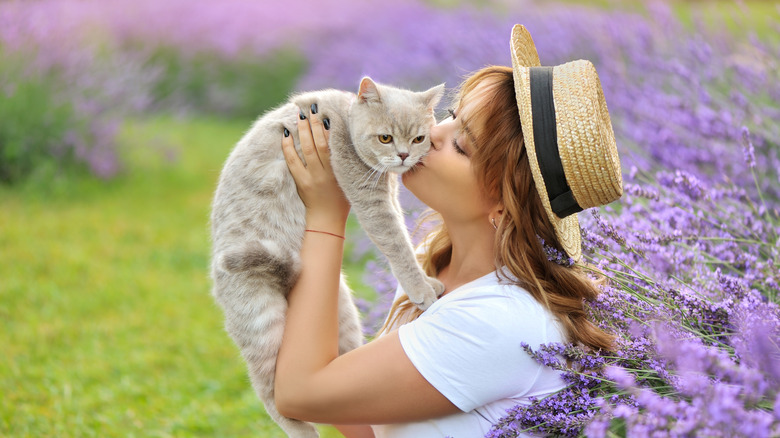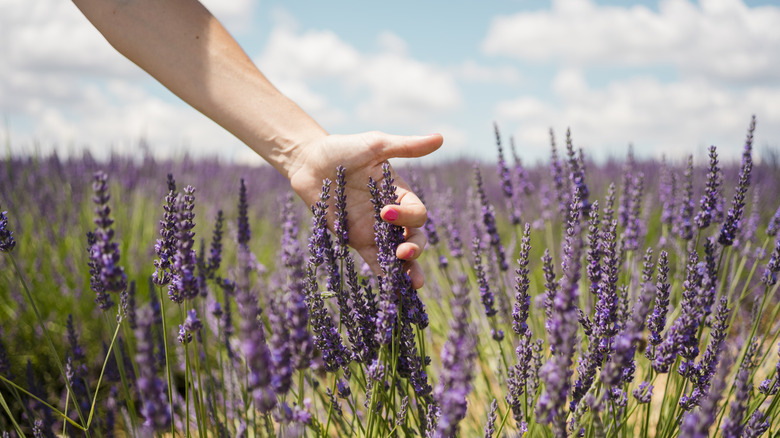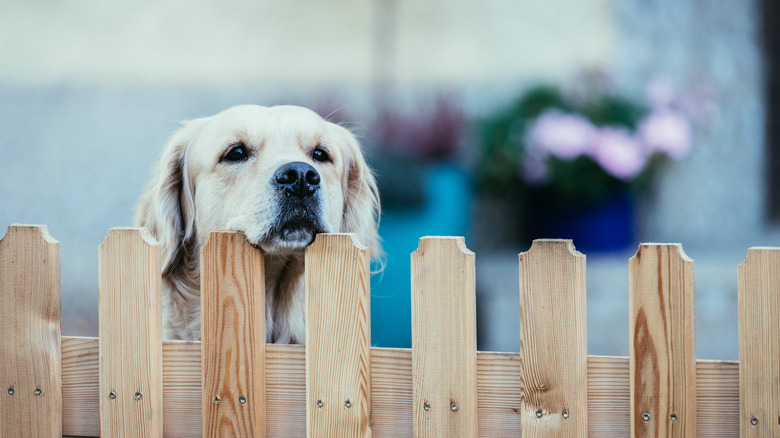Be Wary Of One Thing When Growing Lavender In Your Home Or Garden If You Own Pets
If you have a cat or dog, you might already be constantly looking for ways to make your living space more pet-friendly. Keeping your furry friends safe and happy are usually your top priorities as a pet owner — and when it comes to safety, your house plants and backyard garden can be some of the most major concerns for dogs and cats. You probably already know that everything from popular pothos plants to common lilies have been listed as unsafe and dangerous for pets. However, you might not have realized that lavender is also defined by the ASPCA as toxic to dogs, cats, and horses.
Lavender, also known as Lavendula angustifolia, is one of those common ingredients found in a lot of homes. It is often used in various household cleaners and air fresheners because of its well-known benefits for humans, including reducing stress, improving sleep, and relieving anxiety and depression. However, lavender contains both linalool, which is a terpene alcohol that gives the plant its floral aroma, and linalyl acetate, a natural aromatic chemical that is found in a lot of essential oils. Both of these compounds provide lavender its therapeutic properties but can be unsafe for your pets, especially if ingested in large or highly concentrated quantities. With that in mind, there are several things you might want to consider before growing lavender in your home or garden if you want to ensure your pets' safety.
How it affects pets
First let's understand the basics of how lavender affects your pets. Both dogs and cats lack the necessary enzymes in their liver to process the harmful compounds found in lavender. The liver is your pet's filtering system, ensuring that harmful substances leave the body or are converted into something useful for the systems to thrive. When the liver is unable to filter a substance properly, it can lead to a build-up of toxins which in extreme cases, can lead to liver failure. However, there are plenty of things to consider, like exactly how toxic lavender is in various quantities and why it is dangerous for your pets.
In its plant form, the amount of harmful compounds are low enough that the most common concern is gastrointestinal issues, resulting in an upset stomach, diarrhea, and vomiting in both cats and dogs. However, the more serious concern is its use in essential oils, which contain highly concentrated levels of the plant compounds, and can lead to lavender poisoning, particularly in cats. While there are studies that show lavender aromatherapy is safe for use on dogs and can actually help them relax, there are much more serious consequences for cats. Essential oil skin contact on cats can cause irritation and burning — even having lavender essence in the air can cause irritation on their skin. Signs that your pet has been exposed to toxic levels of lavender are drooling, lethargy and difficulty breathing.
Tips to avoid this
There are plenty of house plants you should never grow in a home with pets, but lavender isn't necessarily one of them. Just because curious cats and rambunctious dogs love to get into your potted plants and garden, it doesn't mean you need to get rid of your lavender. While the safest option is to rid your home of all things lavender, there are still plenty of tips for keeping your pets out of your garden and other ways to prevent your furry friends from coming in contact with harmful substances. Ultimately, it's up to you to weigh out the benefits for you with the concerns you have for your pet's safety.
If you want to hold onto your lavender, we recommend you make sure your lavender plants are out of each of your pets. Consider keeping them on high shelves that are not accessible to your four-legged buddies or displaying them in rooms they don't have access to. If you keep lavender in your garden, place a fence around it and make sure you supervise your pets' outdoor time. For cat parents who love products like oils, sprays and candles, you want to make sure you avoid using them in areas of your home your cat likes to be in. You can also look for pet-friendly products that will only contain harmless levels of lavender. It is important to seek veterinary care as soon as possible if you suspect your pet has ingested any amount of lavender.


